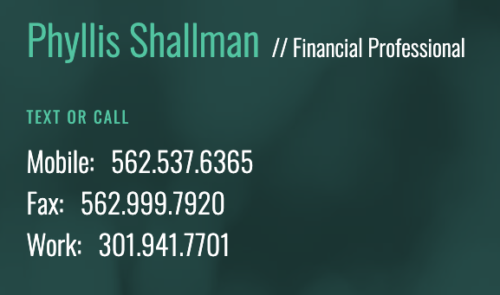
Nearly 25% of Americans report that they have ZERO dollars saved for an emergency.¹
If something unexpected were to happen, do you have enough savings to get you and your family through it and back to solid ground again?
If you’re not sure you have enough set aside, being blindsided with an emergency might leave you in the awkward position of asking family or friends for a loan to tide you over. Or would you need to rack up credit card debt to get through a crisis? Dealing with a financial emergency can be stressful enough – like an unexpected hospital visit, car repairs, or even a sudden loss of employment. But having an established Emergency Fund in place before something happens can help you focus on what you need to do to get on the other side of it.
As you begin to save money to build your Emergency Fund, use these 5 rules to grow and protect your “I did not see THAT coming” stash:
1) Separate your Emergency Fund from your primary spending account. How often does the amount of money in your primary spending account fluctuate? Trips to the grocery store, direct deposit, automatic withdrawals, spontaneous splurges – the ebb and flow in your main household account can make it hard to keep track of the actual emergency money you have available. Open a separate account for your Emergency Fund so you can avoid any doubt about whether or not you can replace the water heater that decided to break right before your in-laws are scheduled to arrive.
2) Do NOT touch this account. Even though this is listed here as Rule #2, it’s really Rule #1. Once you begin setting aside money in your Emergency Fund, “fugettaboutit”… unless there actually is an emergency! Best case scenario, that money is going to sit and wait for a long time until it’s needed. However, just because it’s an “out of sight, out of mind” situation, doesn’t mean that there aren’t some important features that need to be considered for your Emergency Fund account:
- You must be able to liquidate these funds easily (i.e., not incur penalties if you make too many withdrawals)
- Funds should be stable (not subject to market shifts)
You definitely don’t want this money to be locked up and/or potentially lose value over time. Although these two qualities might prevent any significant gain to your account, that’s not the goal with these funds. Pressure’s off!
3) Know your number. You may hear a lot about making sure you’re saving enough for retirement and that you should never miss a life insurance premium. Solid advice. But don’t pause either of these important pieces of your financial plan to build your Emergency Fund. Instead, tack building your Emergency Fund onto your existing plan. The same way you know what amount you need to save each month for your retirement and the premium you need to pay for your life insurance policy, know how much you need to set aside regularly so you can build a comfortable Emergency Fund. A goal of at least $1,000 to three months of your income or more is recommended. Three months worth of your salary may sound high, but if you were to lose your job, you’d have at least three full months of breathing room to get back on track.
4) Avoid bank fees. These are Emergency Fund Public Enemy No. 1. Putting extra money aside can be challenging – maybe you’ve finally come to terms with giving up the daily latte from your local coffee shop. But if that precious money you’re sacrificing to save is being whittled away by bank fees – that’s downright tragic! Avoid feeling like you’re paying twice for an emergency (once for the emergency itself and second for the fees) by using an account that doesn’t charge fees and preferably doesn’t have a minimum account balance requirement or has a low one that’s easy to maintain. You should be able to find out what you’re in for on your bank’s website or by talking to an employee.
5) Get started immediately. There’s no better way to grow your Emergency Fund than to get started!
There’s always going to be something. That’s just life. You can avoid that dreaded phone call to your parents (or your children). There’s no need to apply for another credit card (or two). Start growing and protecting your own Emergency Fund today, and give yourself the gift of being prepared for the unexpected.
¹ “Nearly 25% of Americans have no emergency savings,” Quentin Fottrell, MarketWatch, Jun 9, 2020, https://www.marketwatch.com/story/nearly-25-of-americans-have-no-emergency-savings-and-lost-income-due-to-coronavirus-is-piling-on-even-more-debt-2020-06-03
